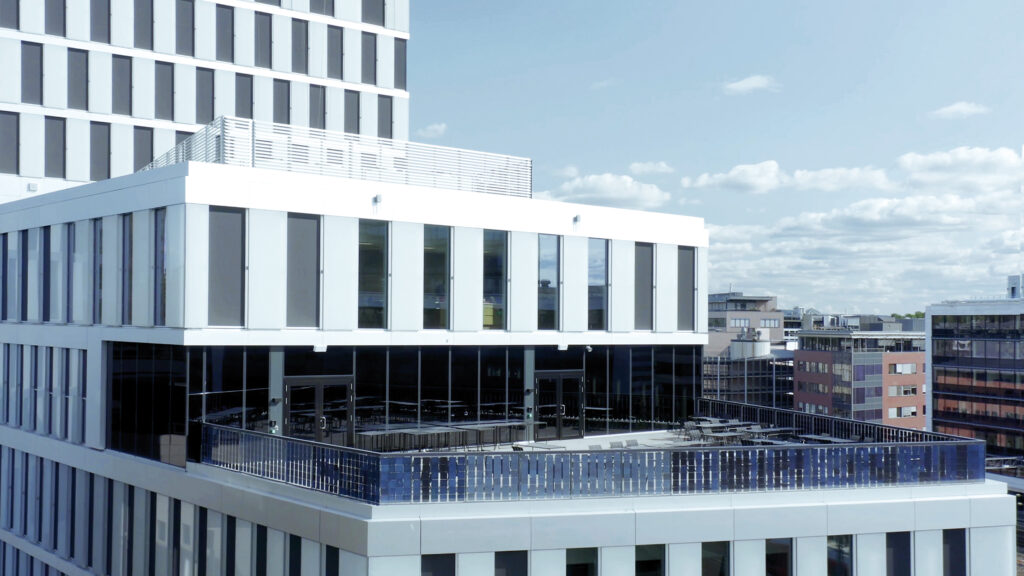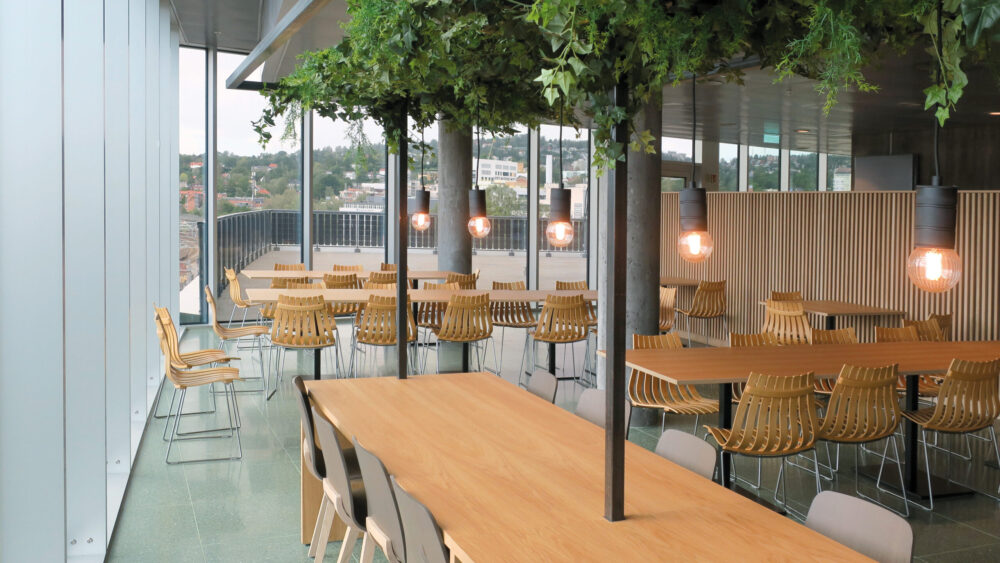
If the world is to have any chance of keeping the global temperature rise this century to well below 2°C above preindustrial levels as laid out in the Paris Agreement, then it will need to build greener and smarter.
The buildings and construction sector accounted for the largest share of both the global final energy use (36%) and energy-related CO2 emissions (39%) in 2018, according to the International Energy Agency. As a result, it represents the biggest industrial threat to combatting climate change, but also its greatest opportunity.
To succeed in meeting the World Green Building Council’s stated objective of total decarbonisation by 2050, the industry must drastically reduce the embodied carbon created by the production of building materials – with the cement industry alone generating an estimated 2.8bn tonnes of CO2 every year – and the construction of the buildings themselves, which together account for 11% of total global emissions.
But far more importantly, any such reductions that are achieved through the greening and decarbonising of the production of those materials must also be joined by an even greater reduction in the emissions generated by their operation, which account for 28% of global CO2 emissions.
Higher certifications drive higher rents
Fortunately, as great as the challenge is, there are positive signs that both the scope of opportunity and appetite to realise it are starting to emerge.
According to the U.S. Environmental Protection Agency, there is ‘enormous’ potential to reduce energy consumption in both existing and new commercial buildings. As things currently stand, it calculates that an average of 30% of the energy they consume is wasted, offering scope to make significant headway even before further technological advances are made.
To drive the pursuit of these and other savings across the real estate management and investment industry, sustainable building standards and green certification programmes such as the Building Research Establishment Environment Assessment Method (BREEAM) and Leadership in Energy and Environmental Design (LEED) have set a high bar in overall building performance.
Over the years, deeper understanding of the risk that climate change poses on real estate, along with the acknowledgement that the construction industry is one of the biggest contributors to global warming, has moved companies to find new solutions to meet rising standards and comply with certification initiatives.
One such example is Switzerland’s largest property investment group Swiss Prime Site. With a target for a climate-neutral property portfolio by 2040, the group appointed leading smart glass manufacturer Eyrise to supply dynamic liquid crystal glazing for the full external facade of the renovation of its recently acquired seven-storey property in central Zurich.
The renovation of the commercial property, which will be fully let to Google upon its completion in early 2024, will be carried out to meet the highest grades of both the Swiss Minergie standard for reducing carbon emissions and the Swiss Sustainable Building Standard.
With the production of all glass panels being powered entirely by renewable wind power at the Eyrise production facility in the Netherlands, its use will contribute to both the embodied carbon and operational emissions.
“This unique dynamic building facade is in line with the highest environmental standards,” explains Celine Glipa, CEO of Eyrise. “It will preserve energy resources, create an attractive working environment and help to increase the building’s value over time.”
Upon its completion, the Zurich renovation will become the latest addition to a series of pioneering building projects that have put environmental performance and sustainability at their heart which Eyrise has played a critical role in enabling.
These include the ORKLA City development in Oslo, Norway where the glazing was used to protect the cafeteria facade and enable employees to enjoy a bright space with continuous thermal comfort, and the recently renovated headquarters of BAFTA in London where the technology played a key role in enabling the building to upgrade its to the highest EPC rating.

Through all its partnerships, Eyrise utilises innovative product design and manufacturing to obtain green certifications for customer projects. Eyrise itself is certified through an Environmental Product Declaration (EPD), has CE mark, and provides a reduced supply chain for customers in the same geographical region alongside a lowered footprint in materials.
As such, dynamic liquid crystal glazing is becoming increasingly sought by building owners and investment firms. The technology enables the glass to be tinted to provide instant solar shading without compromising on natural daylight and, due to its thermal regulation properties, offers control over the amount of light and heat that is absorbed or dispersed in order to naturally moderate the internal temperature, which in turn reduces the need for mechanical air conditioning and lighting.
Maximising efficiency with dynamic glazing
But achieving the highest rating in either certification is not simply a matter of ingenuity, with a BREEAM Outstanding or LEED Platinum building estimated to cost an average of 10% to 12% more than if it just complied with local building codes. In the long term, however, the benefits delivered on both a financial and environmental front are believed to pay dividends.
This is particularly the case for commercial property owners and real estate investment firms who can increase both a buildings attractiveness to tenants and rental income by achieving such certifications.
In fact, according to analysis by CBRE, which was based on five years’ worth of data, certified buildings benefited from a 21% rent premium when compared to non-certified buildings, while also recording a lower vacancy risk and an increase in leasing velocity.
One of the key areas where significant savings on both carbon emissions and operational cost can be made is heating, ventilation and air conditioning systems (HVAC), with the International Energy Agency reporting that 30% of energy delivered to buildings is dissipated in the air that escapes.
This places an economic and environmental premium on making HVAC systems themselves more efficient but also on any technologies that can reduce their usage.
Beyond sustainability
Of course, when considering materials and processes for any construction project, there are a range of factors at play beyond its environmental impact. Products must be economically viable, built to last and, depending on the building’s end purpose, meet a range of social needs.
Dynamic glazing based on liquid crystal technology performs across this spectrum of requirements, with benefits including full control over incoming solar radiation, maximisation of solar gain and ensuring the best natural light conditions with no glare.
Compared to standard sun-blind or louvered systems, Eyrise glazing also offers reduced maintenance, mechanical breakdown cover and electromotor power. In addition to ensuring environmental comfort and reduced energy consumption costs, the technology maintains a neutral environment across the tint spectrum and grants colour neutrality to support occupants’ natural circadian rhythms throughout the day. The result of this “lightwellness” is a more positive impact on health, wellbeing, and productivity.

For office buildings such as Swiss Prime Site’s Zurich new project, this is a concept that should not be overlooked. A US study on ophthalmic and physiological optics in 2011 revealed a significant reduction in absenteeism and health problems for people working in an environment with ideal lightwellness. In other words, when incoming light and heat are controlled, people feel better and are less likely to become ill, equating to 4.4 days of productivity gained, a £730 million saving on health costs and a £70 million saving on energy.
For more on how Eyrise is lowering carbon and operational costs while boosting occupant wellbeing, download the whitepaper below.


